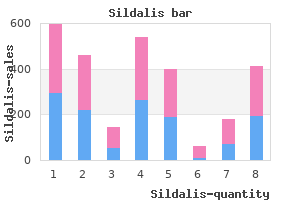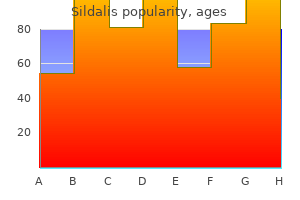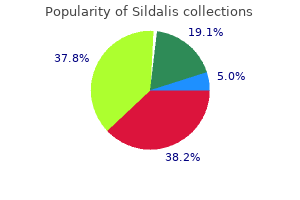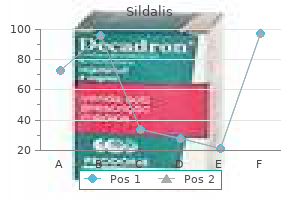





|
STUDENT DIGITAL NEWSLETTER ALAGAPPA INSTITUTIONS |

|
"Buy sildalis 120mg, best erectile dysfunction drug review".
Q. Hjalte, M.A., M.D., M.P.H.
Professor, University of Michigan Medical School
This opportunity only lasts while the "standard of care" is nothing more than supportive measures erectile dysfunction treatment pills cheap 120 mg sildalis free shipping. About 2 weeks after hydroxychloroquine use was halted erectile dysfunction drugs market best 120mg sildalis, death rates approximately tripled coffee causes erectile dysfunction generic sildalis 120 mg otc, for about 15 days erectile dysfunction causes alcohol discount sildalis 120mg amex. You reverse an old trick of clinical trials, to mask benefit of hydroxychloroquine. The chief doctors wrote: While it is for every individual clinician to make prescribing decisions, we strongly discourage the use of off-label treatments outside of a trial, where participation in a trial is possible. Any treatment given for coronavirus other than general supportive care, treatment for underlying conditions, and antibiotics for secondary bacterial complications, should currently be as part of a trial, where that is possible. While the media sparsely attended the press conference, the livestream got millions of views. Hydroxychloroquine use is truly the wedge issue for understanding and turning around the pandemic. You must make use of the levers of government, mainstream media, and social media to stop that from happening. When nursing home residents were dying like flies last April, when tests were hard to come by and confirmed diagnoses few and far between, doctors used this medicine to try to prevent nursing home deaths during a pandemic. The Washington Post article does not even tell us whether the patients survived, thrived, or were harmed. Fauci discredit published observational studies that show benefit during a Congressional hearing, demanding randomized controlled trials. It is difficult to believe there was extreme lack of interest in a treatment trial, and such massive interest in a vaccine trial. This is the first time I have ever heard such a thing: research physicians are pressuring frontline doctors not to veer from protocoldetermined treatment, even when patients enrolled in treatment trials are at risk of death. You mention the "stellar" Recovery trial in the August 5 New York Times but avoid any hint that its hydroxychloroquine arm gave patients a toxic dose. Next, I will introduce the second and only other separate essay that I am including in my report. She is a leader in the field informed medical decisionmaking and a professional with whom I have worked closely with for many years. Without intending it for this report, but instead for a future book, 296she recently wrote the following analysis that describes the personal suffering created by the lockdowns and other totalitarian measures. Popper talks personally with 50-100 people a week from around the world, and almost 300,000 people each week through her newsletter and videos. What follows is her broad analysis of the untoward consequences of totalitarian policies and practices, along with personal descriptions of individual suffering, including her personal responses. Her viewpoint is consistent with my own and, in addition to her insights, it adds the humanity that this report that would otherwise be lacking. A couple of weeks to "flatten the curve" turned into a few more weeks and then months of restrictions with absolutely no end in sight. The emperors and empresses running the states and health officials even stopped putting forth a goal that if reached would put an end to their unconstitutional power grab. There seemed to be no balancing of the harm from the virus vs the potential harm from policies inflicted on the public. Both governors and mayors continued to issue one crushing decree after another with complete disregard for the consequences of their decisions. The economy had crashed, the unemployment rate was at an unprecedented high, homelessness was increasing, and the suicide and overdose rates had skyrocketed. The most vulnerable children had gone backwards academically, and nursing home patients were dying of neglect. Society as we knew it had evaporated and a growing number of people were Pam Popper is a frequent guest on the Dr. Her latest appearance on August 19, 2020 was about the coronavirus and the lockdown. Impact Based on Age the data are clear the most vulnerable people during flu season every year are seriously ill or immunocompromised people of any age, and the elderly especially those who are sick enough or frail enough to be confined to nursing homes. Even the lockdowns of nursing homes seem outrageous when looking back at the impact of residents.

There was a significant gender gap on one aspect; more females indicated that their personal goals and concerns are "very important" in the decision-making process (64 percent) than males (50 percent) impotence diagnosis code cheap 120 mg sildalis with visa. Finally erectile dysfunction hormonal causes buy sildalis 120 mg cheap, to determine the specific language that can be used to communicate about medical evidence erectile dysfunction drugs bangladesh generic 120 mg sildalis overnight delivery, we asked people how confident they were that a particular phrase described the information they need to make decisions about treatments with their provider erectile dysfunction doctor mumbai purchase sildalis 120mg line. This finding indicates that people recognize the common-sense value of sharing information to improve health and health care-and possibly that there is a thirst in the general population for care improvement through data sharing. We found that people want deep engagement in conversations about their health care, including detailed medical evidence. They do not want their provider to make decisions for them or offer only some of the options. It is incumbent upon providers and institutions to create the environment and provide the tools to make this possible. Furthermore, we found a gap between what people want and what they get with regard to engagement in health care. Given the health benefits and cost savings demonstrated when patients are actively involved in shared decision making about their health care, this gap represents a lost opportunity to achieve the triple aim-better care, lower costs, and better health. In addition to wanting involvement in medical decisions, people are aware that there are benefits to care coordination and believe that their care should be better coordinated. People with chronic conditions are even more aware of this need than the general population. Given that the high costs of care for chronic conditions can be lowered through good care coordination-and that people actively want to be involved in better-coordinated care-this gap is both costly and unnecessary. Our data indicate that deep engagement in shared decision making is not only desired by people but is a core component of their experience as patients. Ongoing efforts should focus on the importance of measuring and providing what is important and meaningful to patients. Health care providers and others who seek to engage patients can confidently use the language provided here to describe medical evidence in a way that resonates positively with the general public. People are particularly receptive to conversations about medical evidence in the context of discussions with a trusted, expert health care provider who takes their goals and concerns into account. We believe there are three key areas of action 11 that can help ensure that every medical decision is an informed medical decision, shared between the health care provider and the patient and family. Cultural Changes To achieve the vision of care patients and families desire and deserve, it will be important to recognize and act upon the gap between what they want from their health care system and what they currently receive. Patient awareness of and engagement in the three elements of an informed decision (clinical expertise, medical evidence, and individual goals and concerns) will need to become part of the routine culture of medical decision making. This cultural shift will require that clinicians be encouraged, empowered, and motivated to facilitate informed medical decisions whenever and wherever they practice. The communications literature indicates that encouraging clinicians to adopt the practice of informed medical decision making may be most successful if they are made aware of the benefits to their patients. The data presented here show clearly the gap between what patients want and what they get and can serve as a stimulus for activation. By coupling knowledge of the broad desire among the public for deeper involvement in health care decision making with information about existing tools-such as mobile technologies, programs in care coordination, and more-patients, families, and other advocates can help drive change with their health care providers and within their health care settings. Incentive Alignment and Infrastructure Support With the advent of new payment models focused on managing the health of populations and coordinating care comes a distinct opportunity to advance informed decision making. Patient-centered medical homes, health care exchanges, and accountable care organizations structured to embrace informed medical decision making as a central tenet will enable models of care that deliver on the promise of patient activation and engagement. To support sustainability of these models, public and private payers can provide incentives to clinicians and patients to engage in informed medical decision making. Several opportunities exist at the institutional level to promote informed medical decisions by making the right thing easy to do. Institutions can help identify high-quality decision aids and make these easily and routinely accessible to clinicians, patients, and families. Institutions can also assist by identifying and making available time, space, and personnel to carry out the process of informed medical decision making.

Susan Gal and Judith Irvine (1995) refer to this nesting of the overall opposition within each component of the opposition as fractal recursivity impotence diabetes discount sildalis 120mg overnight delivery. Recursivity provides a particularly powerful force in gender enforcement erectile dysfunction commercials buy generic sildalis 120 mg online, as people tend to compare themselves not with people of the other gender erectile dysfunction doctor in hyderabad purchase sildalis 120 mg free shipping, but with people of their own erectile dysfunction treatment stents purchase sildalis 120mg. While women deemed masculine may 14 Psychologist Daryl Bem (1996) has hypothesized a fundamentally oppositional principle for sexual attraction the exotic becomes erotic to explain both cross-sex and same-sex desire. Girls and boys constructing themselves as heterosexual see others of the same sex as too like themselves to be desirable, whereas those who develop same-sex desires see themselves as sex-atypical and find sex-typical members of their own sex more desirable than members of the other sex because of the greater "exoticness" of those conforming same-sex individuals. The theory is hard to reconcile with the fact that sex-atypicality is only loosely correlated with same-sex desire. It also would seem to predict a much higher incidence of cross-racial and cross-class attraction than is found. This is one reason that masculine behavior in women is often less stigmatized than feminine behavior in men. The association of gender and heterosexuality also leads to the association of gender-atypical behavior with homosexuality, especially for boys and men. Policing gender is tied very closely in modern western societies with policing sexual preference. Division of labor the traditional gender oppositions listed in the above section are closely tied to a division of labor that permeates society at every level. This is not simply a division of physical and mental labor, but of emotional labor as well. Of course, no division of labor is simply a division of activity, for activity determines such things as patterns of association, movement, and use of space. In turn, the division of labor tends to call for, and even to instill, the gendered qualities that are the terms of the oppositions. To the extent that some activities and spheres have greater power and prestige than others, a division of labor can also be a division of value. Across societies, the gendered division of labor involves differential power and status. Males in most cultures have more access to positions of public power and influence than females. While women sometimes wield considerable influence in domestic settings or in other nonpublic domains, this influence is limited by the domain itself. And her ability to exert power and influence in the private sphere depends on how these men allocate the goods that they gain in the marketplace. Women, as bearers of children, are assigned not only to delivering them, but to raising them, and to the nurturing not only of children but of entire families, and to the care of the home in which families are based. If one were to imagine a division of labor based on sex alone, women would bear and nurse children and men would not. And women would likely be somewhat restricted in their other activities while engaged in childbearing and nursing. But beyond that, a sex-based division of labor does not follow from reproductive function, which is either quite temporary or nonoccurring within the life span of most women. Nonetheless, the sexual division of labor in all kinds of areas is standardly justified in terms of the different biological requirements for motherhood and fatherhood. Of course, it is not just reproductive potential that is called on to justify the sexual division of labor: women were long kept out of certain jobs because they were deemed too weak to perform them (sometimes even when strength had long since become essentially irrelevant for job performance). Certainly, there might be different sex balances in the allocation of tasks that 25 would emerge because of different sex balances in the attributes needed for success certain tasks requiring unusual strength might, for example, fall to people of great strength, many of whom would be men but some of whom would be women. Yet societies around the world have elaborate allocations of activities and responsibilities purely on the basis of assigned gender, with no attention at all to actual reproductive activity or size. And the sexual division of labor in many areas bears little or no relation even to size or reproductive activity. Thus it should not be surprising that while the existence of a division of labor is universal,15 the details of this division are not. Until recently, this division kept many women out of the public workplace, and while nowadays most women in the west do work outside of the home, many of their occupations are extensions of their domestic role. Wherever they are, women are expected more than men to remember birthdays, soothe hurt children, offer intimate understanding. Men, on the other hand, are more expected to judge, to offer advice and expertise, or to figure out mechanical problems.

MaineCare (formerly Medicaid) Number Record this number if the resident is a MaineCare recipient erectile dysfunction nervous generic sildalis 120 mg mastercard. Although staff members may begin their individual evaluation tasks on different dates erectile dysfunction remedies order 120 mg sildalis with amex, they should refer the assessment to a fixed end date impotence guide purchase 120mg sildalis with mastercard, thereby ensuring the commonality of the assessment period erectile dysfunction virgin cheap sildalis 120mg fast delivery. For an admission assessment, this date can be any day up to the 30th day following admission (the last possible date for completing the admission assessment), but as a practical matter, a somewhat earlier date is probably better. For a follow up assessment, select a common reference date within the period the assessment must be completed. For an admission assessment, staff will begin to gather some information on the day of admission. For example: February 3, 2014 should be entered as: 0 2 Month 0 3 Day 2 0 1 Year 4 Coding: A6. Intent: Reason for Assessment To document the reason for completing the assessment. The assessment must be completed by the end of the 14th calendar day following the determination that a significant change has occurred. A Significant Change assessment is warranted if there is a consistent pattern of changes with two or more areas of decline or improvement. Semi-annual assessment A comprehensive assessment required within 6 months of the last comprehensive assessment. The assessment is sequenced from the date in Section S2b of the previous assessment. Other this is an assessment that is done at the request of a nurse consultant reviewer after an error has been found. Marital Status Choose the answer that describes the current marital status for the resident. MaineCare (formerly Medicaid) A Federal/State program that pays for acute, primary care for people who are members of a category of eligible persons. Social Security Federal Social Security income a government program providing economic assistance to older adults. Process: Check with the billing office or person who handles the "books" to review current payment sources. For example, a resident with moderate dementia may be competent to make decisions in certain areas; although, in other areas, a family member will assume decision-making responsibility. Or a resident may have executed a limited power of attorney to someone responsible only for legal affairs. Legal guardian someone who has been appointed after a court hearing and is legally authorized to make decisions for the resident, including giving and withholding consent for medical treatment. Once appointed, the decision-making authority of the guardian may be revoked only by another court hearing. Durable power of attorney/health care Documentation that someone other than the resident is legally responsible for health care decisions if the resident becomes unable to make decisions. Unlike a guardianship, durable power of attorney/health care proxy terms can be revoked by the resident at any time. Durable power of attorney/financial Documentation that someone other than the resident is legally responsible for financial decisions if the resident is or becomes unable to make decisions. Family Member responsible Includes immediate family or significant other(s) as designated by resident. Self Resident retains responsibility for decisions in the absence of guardianship or legal documents indicating that decision making has been delegated to others, always assume that the resident is the responsible party. Legal Conservator Documentation that someone other than the resident is responsible for the welfare and the property of a person ruled incompetent. Representative Payee Someone other than the resident who has financial responsibility for the payment of bills. Process: Legal oversight, such as guardianship, durable power of attorney, and living wills are generally governed by state law. Intent: Advanced Directives To record the legal existence of directives regarding treatment for the resident, whether made by the resident or a legal proxy. Do not hospitalize A document specifying that the resident is not to be hospitalized even after developing a medical condition that usually requires hospitalization. Organ Donation Instructions indicating that resident wishes to make organs available for transplantation, research, or medical education upon death. Other treatment restrictions the resident or responsible party (family or legal guardian) does not wish the resident to receive certain medical treatments.

Dizziness from orthostatic hypotension occurs with movement to the upright posi tion impotence 1 discount 120mg sildalis with amex. Clinicians may erroneously assume that dizziness that worsens with movement is associated with a benign condition in patients with persistent dizziness erectile dysfunction doctor philippines cheap 120 mg sildalis fast delivery. It uses the Timing of the symptom erectile dysfunction pink guy order sildalis 120mg line, the Triggers that provoke the symptom psychological erectile dysfunction drugs generic 120mg sildalis visa, And a Targeted Examination. In a study of older patients in a primary care setting, medications were implicated in 23% of cases of dizziness. The use of five or more medications is associated with an increased risk of dizziness. Test of skew is assessed by asking the patient to look straight ahead, then cover and uncover each eye. Although this is a less sensitive test for central pathology, an abnormal result is fairly specific for brainstem involvement. Findings from the physical examination-including a cardiac and neurologic assessment, with attention to the head, eye, ear, nose, and throat examination-are usu ally normal in patients presenting with dizziness. Blood pressure should be measured while the patient is standing and in the supine position. If a saccade (rapid movement of both eyes) occurs, the etiology is likely peripheral. Spontaneous unidi rectional horizontal nystagmus that worsens when gazing in the direction of the nystagmus suggests a peripheral cause (vestibular neuritis). Central pathology nystagmus changes direction less than half the time6 and can be suppressed with fixation. Medications Associated with Dizziness Medication Alcohol Antiarrhythmics, class 1a Antidementia agents Antiepileptics Antihistamines (sedating) Antihypertensives Anti-infectives: anti-influenza agents, antifungals, quinolones Antiparkinsonian agents Attention-deficit/hyperactivity disorder agents Digitalis glycosides Dipyridamole Narcotics Nitrates Phosphodiesterase type 5 inhibitors Skeletal muscle relaxants Sodiumglucose cotransporter-2 inhibitors Urinary anticholinergics Skeletal muscle relaxants Urinary and gastrointestinal antispasmodics Antiepileptics Benzodiazepines Lithium Antidiabetic agents Beta adrenergic blockers Aminoglycosides Antirheumatic agents Anticoagulants Antithyroid agents Bleeding complications (anticoagulants), bone marrow suppression (antithyroid agents) Ototoxicity Hypoglycemia Central anticholinergic effects Causal mechanism Cardiac effects: hypotension, postural hypotension, torsades de pointes, other arrhythmias Cerebellar toxicity Information from references 1, 13, and 14. A positive test is indicated if any of these maneuvers trigger vertigo with or without nystagmus. Nystagmus may not develop immediately, and a sense of vertigo may occur and last for one minute. Patients with symptoms suggestive of cardiac disease should undergo electrocardiography, Holter monitoring, and possibly carotid Doppler testing. However, in a summary analysis of multiple studies that included 4,538 patients, only 26 (0. The success rate is approximately 70% on the first attempt, and nearly 100% on successive maneuvers. If there is no improvement with repeated reposi tioning maneuvers, or if atypical or ongoing nystagmus with nausea is present, another cause should be considered. Vestibular suppressant medications should be avoided because they interfere with central compensa tion and may increase the risk of falls. The procedure may be repeated on either side until the patient experiences relief of symptoms. The DixHallpike maneuver is not useful because patients with vestibular neuritis do not have episodic positionally triggered symptoms. If the attacks do not become suc cessively shorter, another diagnosis should be considered. Reassurance, explanation, and advice are essential, in combination with symptomatic treatment for the first American Family Physician 159 Volume 95, Number 3 Vestibular Suppressant Medications Dosage Adverse effects Cost* Antiemetics Metoclopramide (Reglan) Prochlorperazine Antihistamines Dimenhydrinate Meclizine (Antivert) Promethazine 50 mg orally every 6 hours 12. Antiemetics and antinausea medications should be used for no more than three days because of their effects in blocking central compensation. Vertigo and associated nausea or vomit ing can be treated with a combination of antihistamine, antiemetic, or benzodiazepine. Although systemic cor ticosteroids have been recommended as a treatment for vestibular neuritis, there is insufficient evidence for their routine use. Other symptoms include sudden slips or falls, and headache with hearing loss worsened during an attack.